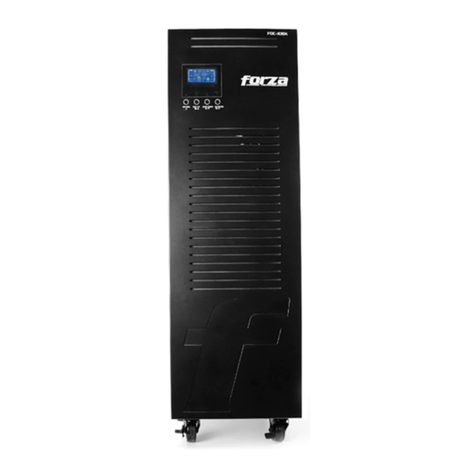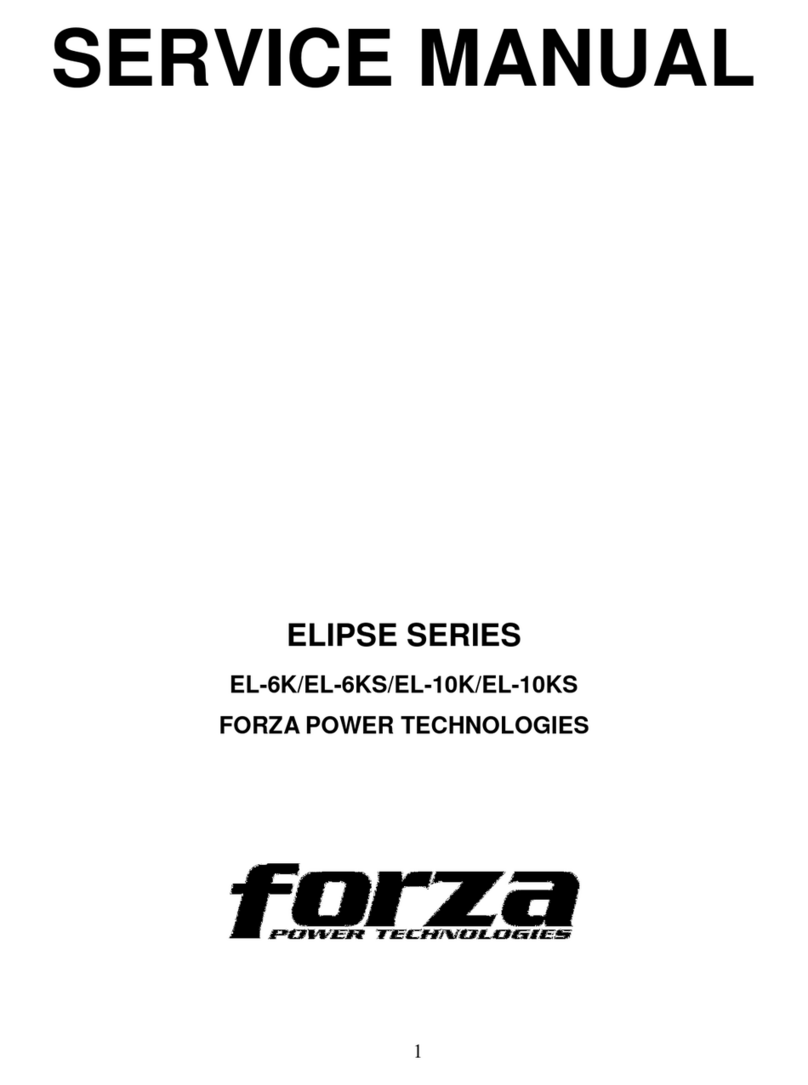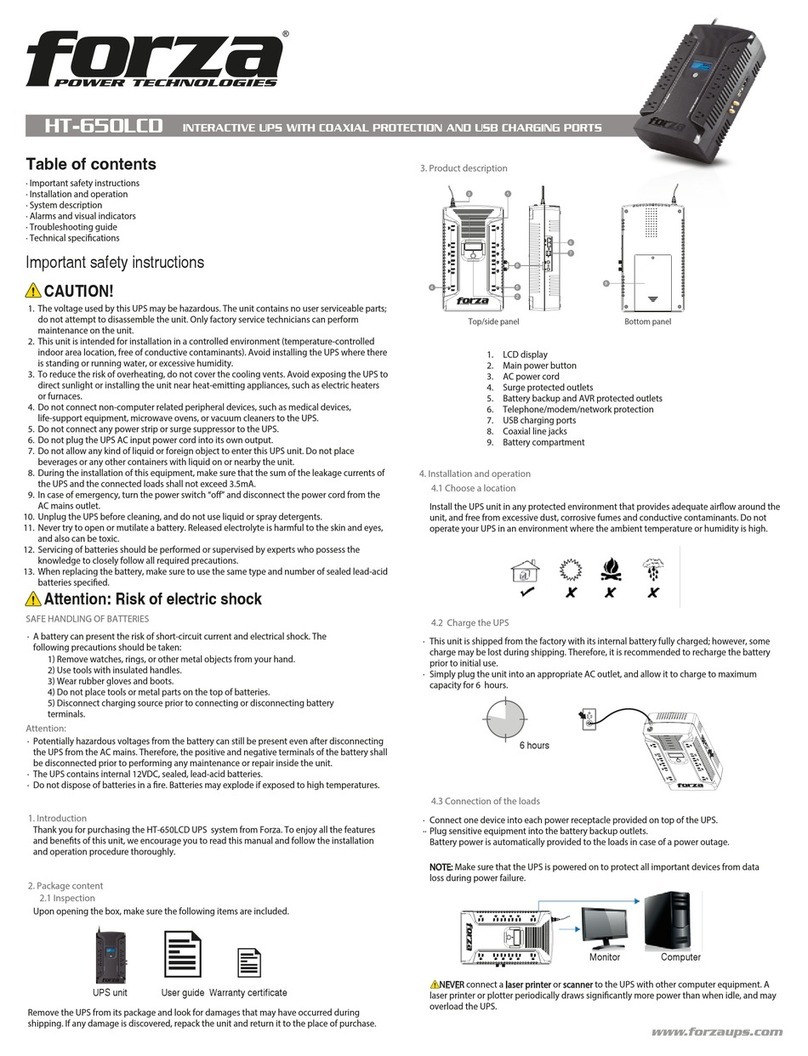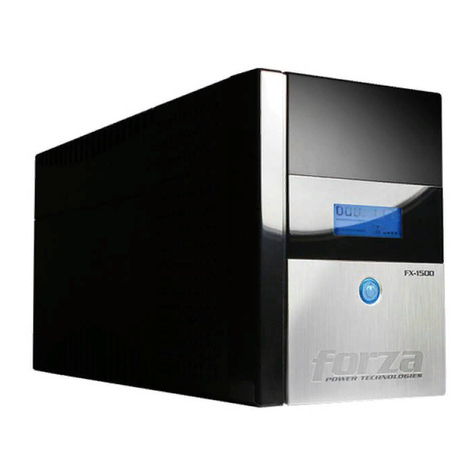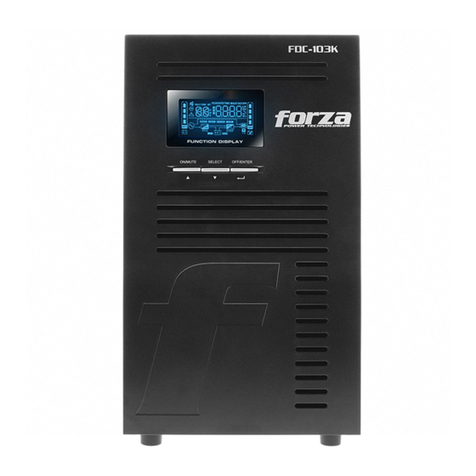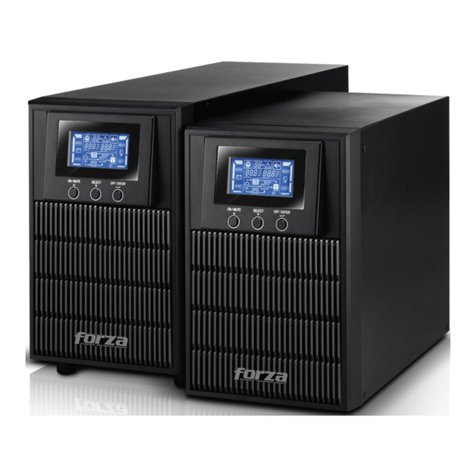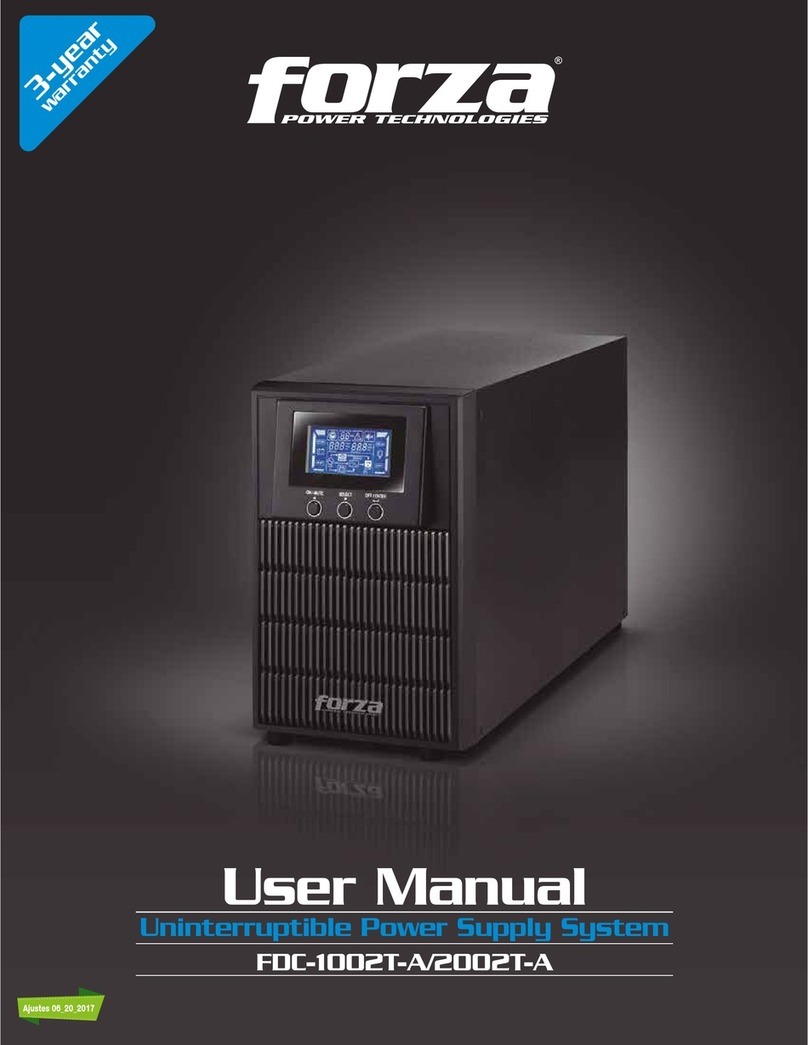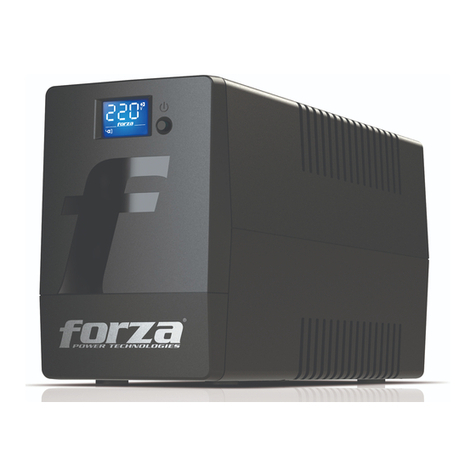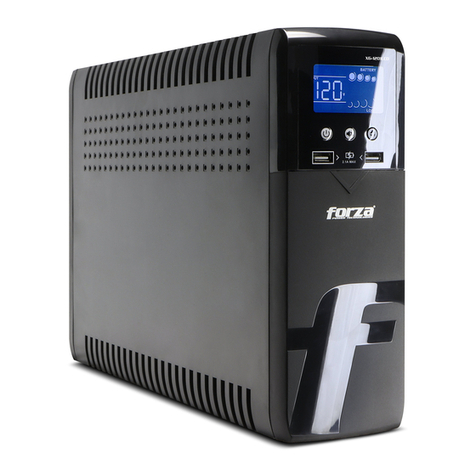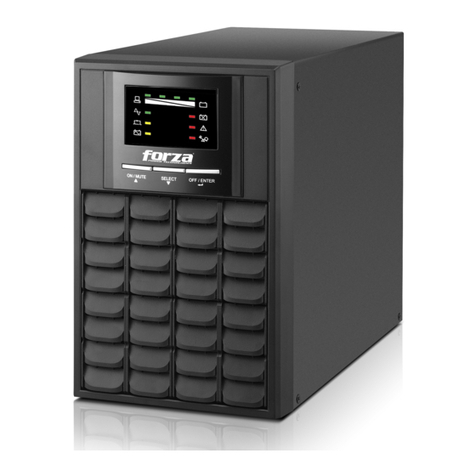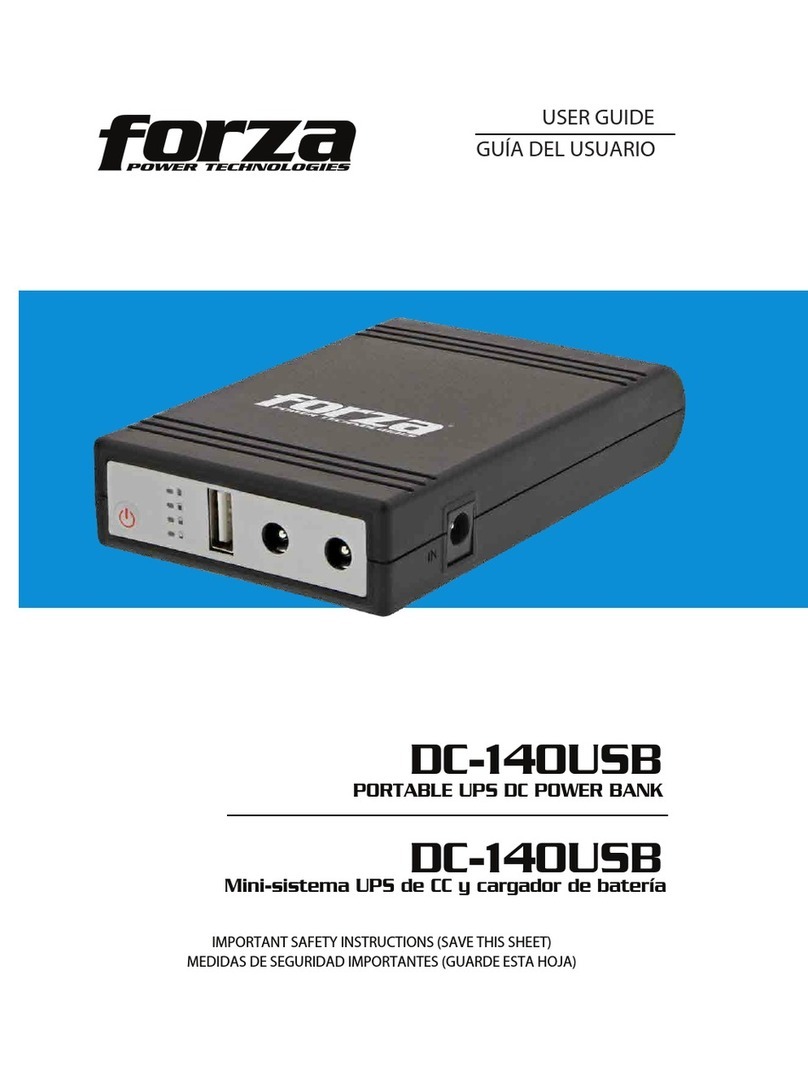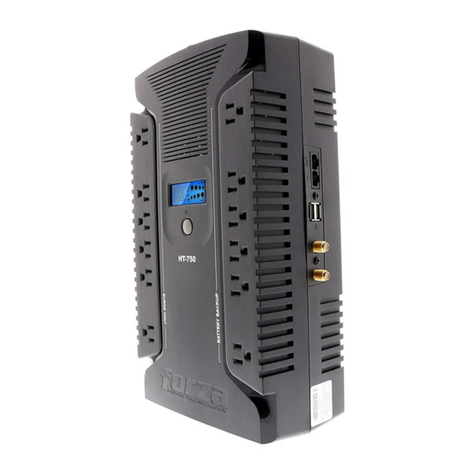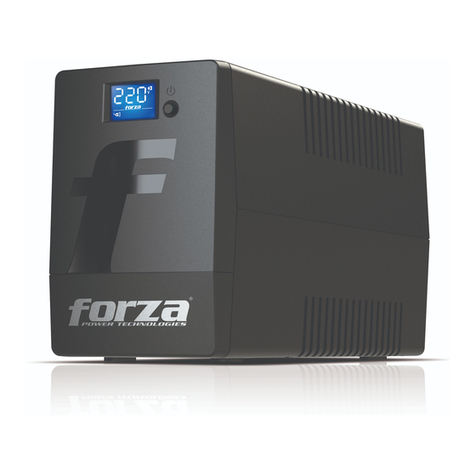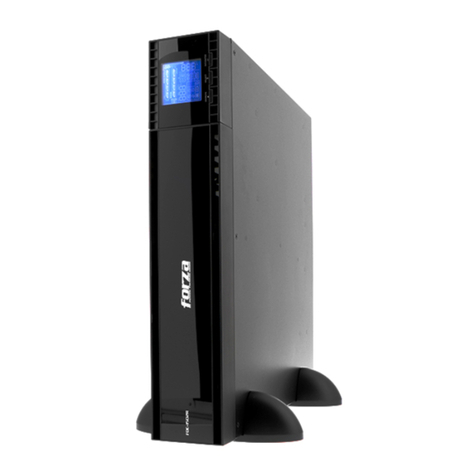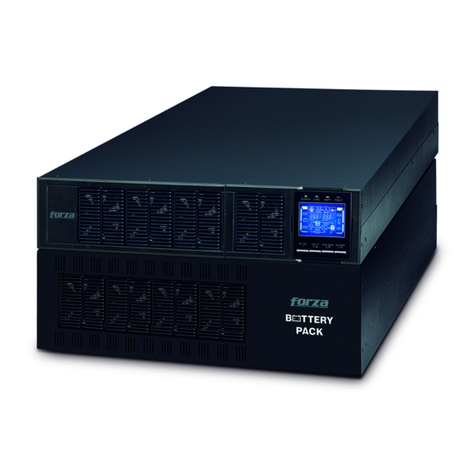
Table of content
1. Introduction
1.1 Transportation
1.2 Preliminary steps
1.3 Initial setup
1.4 Important safety instructions
1.5 Maintenance, service and faults
2. Operation
2.1 Unpacking and inspection
2.2 UPS front and rear panel views
2.3 Installation procedure
2.4 UPS connections
2.5 Turning on the UPS
2.6 Battery replacement
2.7 ForzaTracker monitoring software
3. Advanced operation
3.1 Button and function description
3.2 LCD panel
3.3 Audible alarm
3.4 Abbreviations on the LCD display
3.5 UPS parameter settings
3.6 Operation mode description
3.7 Fault codes
3.8 Warning indicators
4. Troubleshooting
5. Storage and maintenance
6. Technical specifications
1. Introduction
Thank you for purchasing the Forza FDC-2012R-I and FDC -3012R-I Online UPS. To enjoy all the features and benefits of this unit,
please read and follow all installation and operation instructions thoroughly before unpacking, installing or operating this device. After
you have read this manual, keep it in a safe place for future reference.
The information contained in this manual covers the 2000VA / 3000VA uninterruptible power system, its basic functions, operating
procedures, options available and troubleshooting guide. It also includes information on how to ship, store, handle, and install the
equipment.
1-1. Transportation
• Make sure to transport the UPS system only in the original package to protect it against shock and impact.
1-2. Preliminary steps
• Water condensation may occur if the UPS is unpacked in a very cold environment and then moved to a warmer location.
• The UPS must be thoroughly dry before being installed. Failure to do so may increase the risk of electric shock.
• Do not install the UPS system near water or in moist environments.
• Do not install the UPS system where it would be exposed to direct sunlight or near a heater or heating vent.
• Do not block ventilation holes in the UPS housing.
1-3. Initial setup
• Do not connect appliances or equipment that may overload the UPS system (such as a laser printer) to the output sockets.
• Place cables in such a way that no one can step on or trip over them.
• Do not connect domestic appliances, such as hair dryers, to the UPS output sockets.
• Connect the UPS system only to an earthed shockproof outlet which must be easily accessible and close to the UPS system.
• Please only use certified electrical cables for input and output connections.
• During the installation of this equipment, make sure that the sum of the leakage currents of the UPS and the connected loads shall
not exceed 3.5 mA.
CAUTION: The unit is heavy. Lifting the unit requires a minimum of two people.
1-4. Important safety instructions
• Do not disconnect the mains cable on the UPS system or the building wiring outlet (shockproof socket outlet) at any time, since this
would cancel the protective earth of the UPS system and of all connected loads.
• Connect the UPS only to a grounded socket that meets electrical safety guidelines.
• Locate the UPS near a wall socket. Do not use an extension cord between the UPS and the socket.
• In the event of an emergency, press the OFF/Enter button and disconnect the power cord from the AC mains to properly disable the
UPS.
• Do not allow any kind of liquid or foreign object to enter this UPS unit. Do not place beverages or any other containers with liquid on
or nearby the unit.
• The UPS can be operated by any individual with no previous experience.
1-5. Maintenance, service and faults
• The voltage used by this UPS may be hazardous. The unit contains no user serviceable parts; do not attempt to disassemble the unit.
Only qualified service technicians can perform maintenance on the unit. Failure to adhere to this could cause personal injury or
equipment malfunction and void the warranty.
• Caution: - risk of electric shock. Even after the unit is disconnected from the mains, components inside the UPS system are still
connected to the battery packs which are potentially dangerous.
• Before carrying out any kind of service and/or maintenance, disconnect the batteries and verify that no current is present and no
hazardous voltage exists in the terminals of high capacity capacitors, such as BUS-capacitors. Servicing of batteries should be
performed or supervised by experts who possess the knowledge to closely follow all required precautions.
• To avoid electrical shock, turn off the unit and unplug it form the AC power source before servicing the battery.
• Caution: potentially hazardous voltages from the battery can still be present even after disconnecting the UPS from the AC mains.
Therefore, the positive and negative terminals of the battery shall de disconnected prior to performing any maintenance or repair
inside the unit.
• A battery can present the risk of short-circuit current and electrical shock. The following precautions should be taken:
- Remove wristwatches, rings and other metal objects
